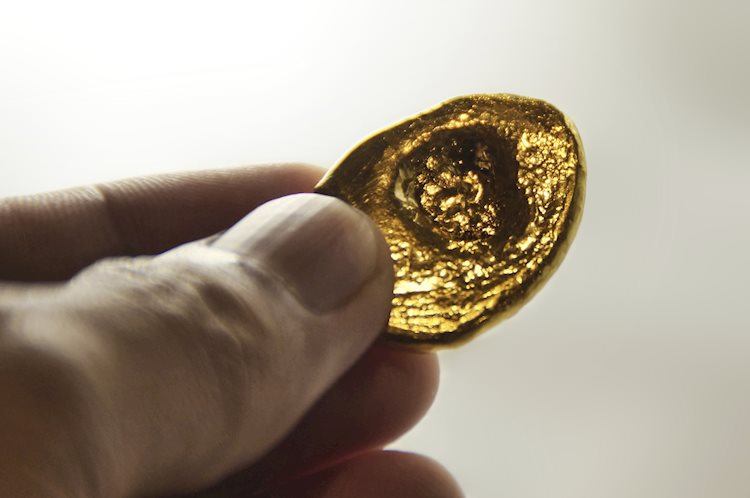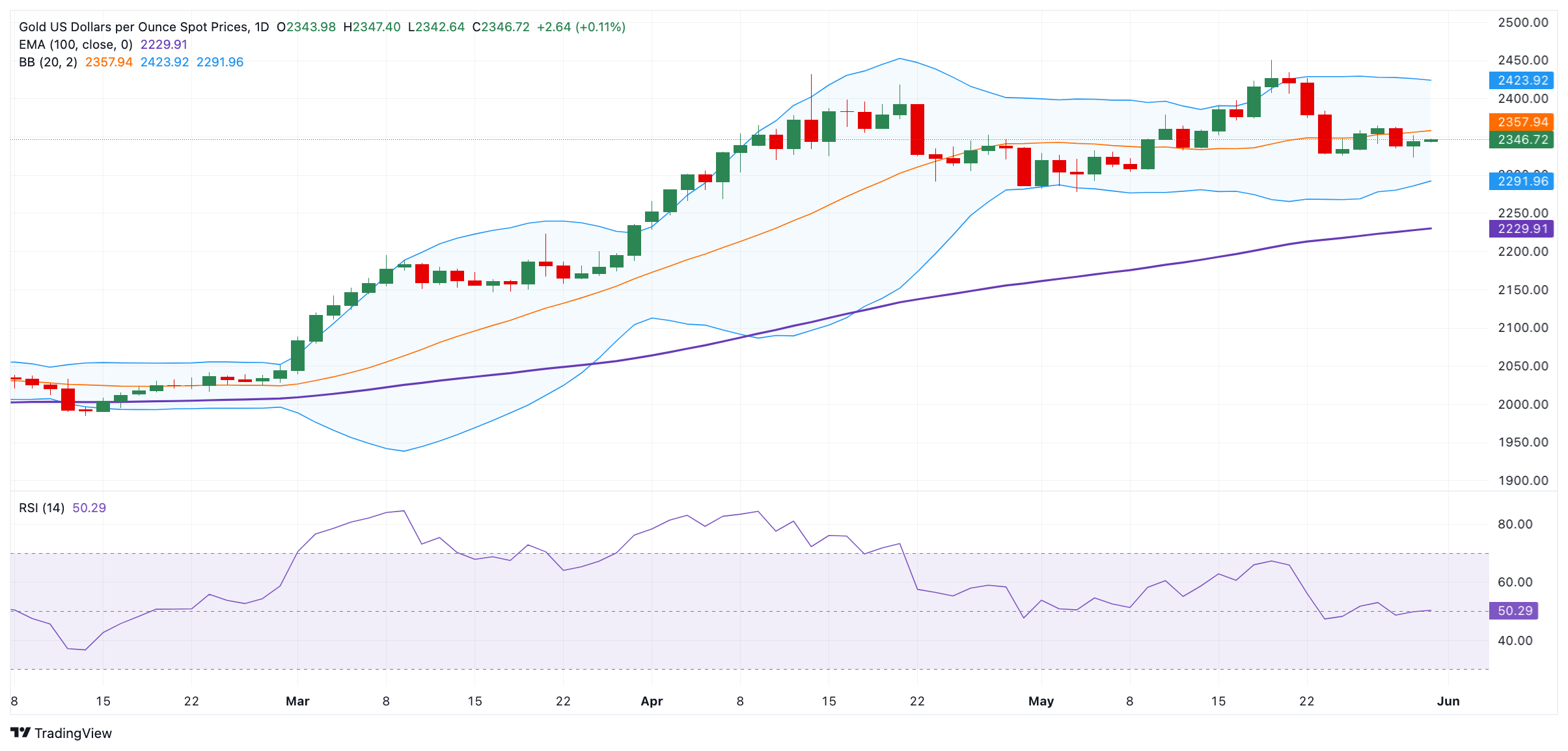Products You May Like
- Gold price trades with a mild positive bias on Friday.
- The weaker USD and decline of US yields support the yellow metal.
- Investors will take more cues from the US April PCE inflation data, which is due on Friday.
Gold price (XAU/USD) advances modestly on Friday on the back of the softer US dollar (USD) and lower US yields. Traders place higher bets that the Federal Reserve (Fed) will cut the interest rate this year after the recent weaker US GDP data. Furthermore, the geopolitical risks and conflicts in the Middle East might boost the precious metal as it is perceived as a traditional safe-haven asset.
Later on Friday, gold traders will keep an eye on the US April Core Personal Consumption Expenditures Price Index (Core PCE), the Fed’s preferred inflation measure. The Core PCE figure is projected to show an increase of 0.3% MoM and 2.8% YoY in April. In case of the hotter-than-expected inflation data, this might provide some support to the Greenback and cap the upside for gold price.
Daily Digest Market Movers: Gold price rises amid geopolitical risks and weaker US GDP
- Israel is in effective control of Gaza’s entire land border after taking control of a buffer zone along the border with Egypt, Israel’s military has said, a move that may complicate its ties with Egypt, per the Guardian.
- The second estimate of US Gross Domestic Product (GDP) showed the economy expanded at an annualized pace of 1.3% in Q1 from 1.6% in the previous reading, in line with market expectations.
- The US weekly Initial Jobless Claims for the week ending May 25 rose to 219K from the previous week of 216K, above the market consensus of 218K.
- Chicago Fed President Austan Goolsbee said on Thursday that housing inflation remains a key sticking point in price growth and that the US labor market remains quite strong.
- Atlanta Fed President Raphael Bostic stated that central bankers are unlikely to deliver an interest rate cut in July amid signs that inflation progress has slowed.
- New York Fed President John Williams noted that inflation is still too high, but he is confident it will start decelerating later this year, per CNBC.
Technical analysis: Gold price remains positive on the daily timeframe
The gold price posts modest gains on the day. Technically, the yellow metal maintains the bullish picture as it is above the key 100-day Exponential Moving Average (EMA). Nonetheless, the 14-day Relative Strength Index (RSI) hovers around the 50-midline, suggesting a lack of direction for gold price and further consolidation looks favourable.
The upper boundary of the Bollinger Band near $2,425 acts as an immediate resistance level for precious metal. Any follow-through buying will see a rally to the all-time high of $2,450 en route to the $2,500 psychological barrier.
On the other hand, the key contention level will emerge at the $2,290–$2,300 region, portraying the lower limit of the Bollinger Band and the round mark. A decisive break below this level will drag the yellow metal lower to the 100-day EMA of $2,230.
GDP FAQs
A country’s Gross Domestic Product (GDP) measures the rate of growth of its economy over a given period of time, usually a quarter. The most reliable figures are those that compare GDP to the previous quarter e.g Q2 of 2023 vs Q1 of 2023, or to the same period in the previous year, e.g Q2 of 2023 vs Q2 of 2022. Annualized quarterly GDP figures extrapolate the growth rate of the quarter as if it were constant for the rest of the year. These can be misleading, however, if temporary shocks impact growth in one quarter but are unlikely to last all year – such as happened in the first quarter of 2020 at the outbreak of the covid pandemic, when growth plummeted.
A higher GDP result is generally positive for a nation’s currency as it reflects a growing economy, which is more likely to produce goods and services that can be exported, as well as attracting higher foreign investment. By the same token, when GDP falls it is usually negative for the currency. When an economy grows people tend to spend more, which leads to inflation. The country’s central bank then has to put up interest rates to combat the inflation with the side effect of attracting more capital inflows from global investors, thus helping the local currency appreciate.
When an economy grows and GDP is rising, people tend to spend more which leads to inflation. The country’s central bank then has to put up interest rates to combat the inflation. Higher interest rates are negative for Gold because they increase the opportunity-cost of holding Gold versus placing the money in a cash deposit account. Therefore, a higher GDP growth rate is usually a bearish factor for Gold price.

